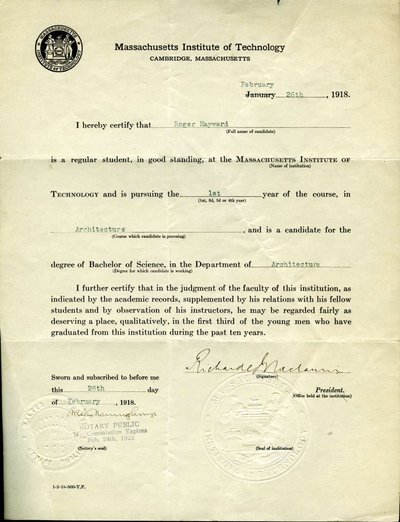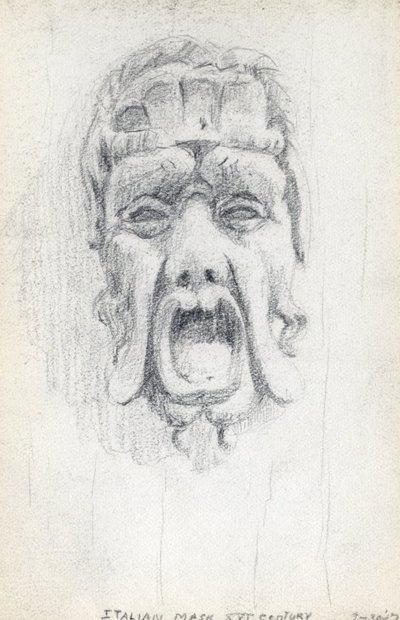His first year at MIT, Roger roomed with an old playmate from Keene at 224 Newbury Street in Boston. He seems to have taken well to his new environment, and his first report card shows him passing very satisfactorily in chemistry, geometry, mechanical drawing and trigonometry. He joined the MIT Architectural Society, and in February of 1918 was cleared to pursue a degree in the Department of Architecture. Roger continued to excel in his studies throughout his time as an undergraduate, albeit with a few notable exceptions, particularly in the social sciences and in English, where he was later forced to petition a failing grade in order to move on to the next series of classes.
Roger continued to draw outside of class, and his freshman year sketchbook is full of scenes and images of the MIT campus and surrounding areas. The book showcases various urban landscapes, several pages of ducks, and his first nudes. The latter section of the book also suggests that Roger was spending a good deal of time at local museums and galleries, including a trip to the Philadelphia Academy of Fine Arts. Roger continued to seek out extracurricular guidance, as in 1918 when he assisted a sculptor in Boston to photograph a life-sized statue of a boy.
Upon completion of his first year, Roger spent another summer in the Naval Reserve, this time in Camden, New Jersey where he checked carloads and piles of lumber. He stayed in the Reserve through the fall of 1918, but was allowed to return to Boston for the remainder of his service, where he donned a “gob’s uniform” while being quartered in the MIT main building until about Christmastime. Hayward was allowed to pursue his studies, but his position in the U.S. Naval Reserve Forces affected him in several ways, including substitution of a course detailing strengths of materials for another involving surveying. Though he was happy overall with his choice to pursue architecture, Roger lamented later in life the segregation of his department from students pursuing different fields of study. The sentiment surfaced more clearly for a couple weeks in 1919 when he considered switching to the field of archaeology. The change may have been pursued if William Emerson, head of the architectural department at MIT, had not intervened and advised against it.


